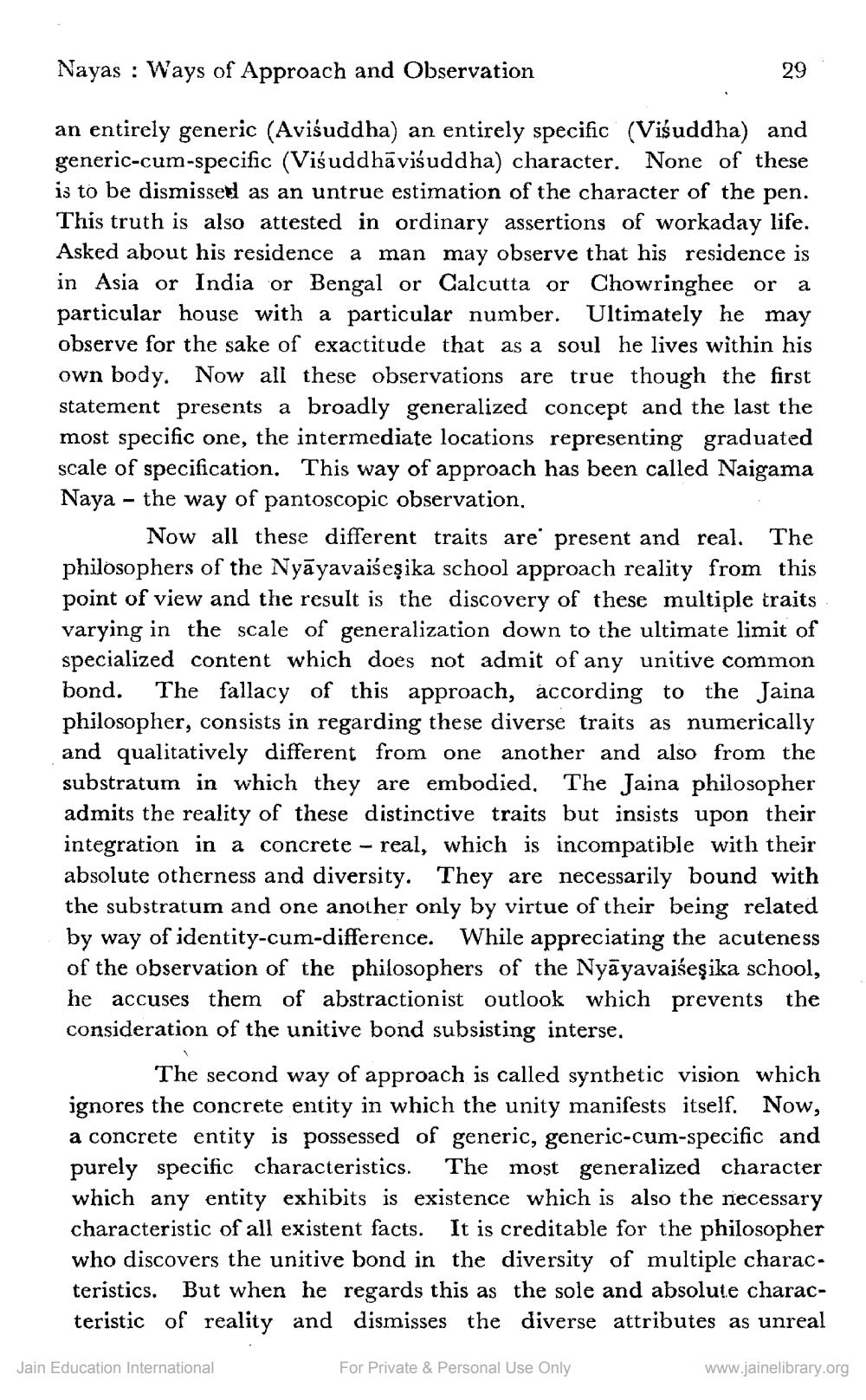________________
Nayas : Ways of Approach and Observation
29
an entirely generic (Avisuddha) an entirely specific (Visuddha) and generic-cum-specific (Visuddhāvisuddha) character. None of these is to be dismissed as an untrue estimation of the character of the pen. This truth is also attested in ordinary assertions of workaday life. Asked about his residence a man may observe that his residence is in Asia or India or Bengal or Calcutta or Chowringhee or a particular house with a particular number. Ultimately he may observe for the sake of exactitude that as a soul he lives within his own body. Now all these observations are true though the first statement presents a broadly generalized concept and the last the most specific one, the intermediate locations representing graduated scale of specification. This way of approach has been called Naigama Naya - the way of pantoscopic observation,
Now all these different traits are present and real. The philosophers of the Nyāyavaiseșika school approach reality from this point of view and the result is the discovery of these multiple traits varying in the scale of generalization down to the ultimate limit of specialized content which does not admit of any unitive common bond. The fallacy of this approach, according to the Jaina philosopher, consists in regarding these diverse traits as numerically and qualitatively different from one another and also from the substratum in which they are embodied. The Jaina philosopher admits the reality of these distinctive traits but insists upon their integration in a concrete - real, which is incompatible with their absolute otherness and diversity. They are necessarily bound with the substratum and one another only by virtue of their being related by way of identity-cum-difference. While appreciating the acuteness of the observation of the philosophers of the Nyāyavaišeşika school, he accuses them of abstractionist outlook which prevents the consideration of the unitive bond subsisting interse.
The second way of approach is called synthetic vision which ignores the concrete entity in which the unity manifests itself. Now, a concrete entity is possessed of generic, generic-cum-specific and purely specific characteristics. The most generalized character which any entity exhibits is existence which is also the necessary characteristic of all existent facts. It is creditable for the philosopher who discovers the unitive bond in the diversity of multiple characteristics. But when he regards this as the sole and absolute characteristic of reality and dismisses the diverse attributes as unreal
Jain Education International
For Private & Personal Use Only
www.jainelibrary.org




